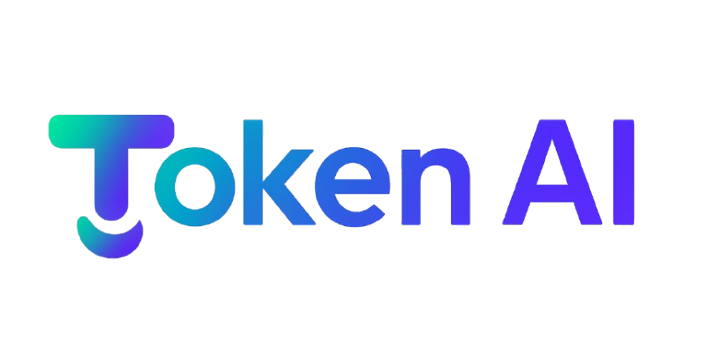Intelligent Brain Tumor Detector Research Paper
Assem Sabry, Token AI Research Team
Token AI Research
IBTD is a deep learning model that identifies and classifies brain tumors from MRI scans using a fine-tuned ResNet50 architecture and advanced training methods for higher accuracy.
Published: 14 July 2025
Title: Intelligent Brain Tumor Detector (IBTD): A Deep Learning-Based System for MRI-Based Brain Tumor Classification
Abstract:
The Intelligent Brain Tumor Detector (IBTD) is a deep learning-based classification model developed to accurately detect and categorize brain tumor types from MRI scans. Utilizing a fine-tuned ResNet50 architecture, the model incorporates advanced training techniques such as data augmentation and MixUp regularization to enhance robustness and generalization. The proposed system achieved an overall accuracy of 98.41%, demonstrating strong potential for real-world medical diagnostic applications.
1. Introduction
Brain tumors represent one of the most critical challenges in medical imaging and diagnostics. Early and accurate detection plays a vital role in improving patient outcomes and guiding treatment strategies. Traditional diagnostic methods rely heavily on manual analysis by radiologists, which is time-consuming and prone to human error.
To address this, the Intelligent Brain Tumor Detector (IBTD) was developed as a deep learning-based solution capable of automatically identifying and classifying brain tumor types from MRI images with high precision and reliability.
2. Model Overview
The IBTD model is a multi-class classifier designed to detect four major categories of brain MRI images:
- GLIOMA
- MENINGIOMA
- PITUITARY
- NOTUMOR
The architecture is built upon a fine-tuned ResNet50 backbone pretrained on ImageNet, enabling efficient feature extraction and classification performance.
3. Model Architecture
Base Model: ResNet50 (pretrained on ImageNet)
Frozen Layers: All layers except the final block (layer4)
Custom Classification Head:
- Global Average Pooling layer
- Fully Connected (Linear): 2048 → 4 (corresponding to four tumor classes)
- Activation Function: Softmax
Training Configuration:
- Loss Function: CrossEntropyLoss
- Optimizer: AdamW
- Initial Learning Rate: 1e-4
- Scheduler: ReduceLROnPlateau (mode='max', patience=3, factor=0.5)
- Epochs: 30
- Batch Size: 32
- Validation Split: 15%
Data Augmentation Techniques: Rotation, flipping, affine transformations, color jitter, and MixUp (α = 0.4).
4. Dataset and Training
The model was trained on a dataset containing a total of 4,856 MRI images for training and 856 images for validation. The dataset was balanced across the four tumor classes to prevent bias and ensure fair evaluation.
5. Evaluation and Results
The IBTD model was evaluated on a balanced test set consisting of the four tumor classes. The model achieved high precision and recall across all categories.
Class | Precision | Recall | F1-score | Support
GLIOMA | 99.65% | 95.00% | 97.27% | 300
MENINGIOMA | 93.87% | 95.10% | 94.48% | 306
NOTUMOR | 99.26% | 99.51% | 99.38% | 405
PITUITARY | 96.44% | 99.33% | 97.87% | 300
Overall Accuracy | — | — | — | 98.41%
Confusion Matrix:
Actual \ Predicted | GLIOMA | MENINGIOMA | NOTUMOR | PITUITARY
GLIOMA | 285 | 15 | 0 | 0
MENINGIOMA | 1 | 291 | 3 | 11
NOTUMOR | 0 | 2 | 403 | 0
PITUITARY | 0 | 2 | 0 | 298
6. Real-World Interpretation
In a practical medical setting, the IBTD model can be integrated into hospital systems to assist radiologists in diagnosing brain tumors. For instance, when a radiologist uploads an MRI scan, the model analyzes the image and outputs a classification with a confidence score.
If applied to 100 patient scans, the model would correctly diagnose approximately 97 to 98 cases, with minimal risk of misclassification, particularly in identifying non-tumor cases (achieving >99% precision and recall).
7. Use Case Scenario
Example:
A radiologist uploads an MRI scan of a patient suspected of having a brain tumor.
The IBTD system processes the scan and returns:
Predicted Class: PITUITARY
Confidence Score: 98.2%
The radiologist then uses this prediction to support diagnosis and prioritize patient treatment planning.
8. Discussion
The results highlight the capability of the ResNet50-based IBTD model to perform reliable classification of brain tumor types. The incorporation of MixUp regularization and strong data augmentation improves model robustness, reducing overfitting and enhancing generalization.
Despite high accuracy, future work could focus on expanding the dataset, introducing attention mechanisms, and integrating segmentation-based preprocessing to further refine classification precision.
9. Conclusion
The Intelligent Brain Tumor Detector (IBTD) demonstrates that deep learning-based medical image analysis can achieve near-human accuracy in classifying brain tumor types. With an overall accuracy of 98.41%, the system provides a strong foundation for AI-assisted diagnostic tools in clinical practice.
Its integration into radiological workflows could significantly reduce diagnostic time, improve consistency, and assist in early detection of brain abnormalities.
Keywords: Brain Tumor Classification, Deep Learning, ResNet50, MRI, Medical Imaging, Artificial Intelligence, MixUp Regularization, Data Augmentation.
License
MIT License - This research is open source and available for academic and commercial use.
Model Performance
| Class | Precision | Recall | F1-Score | Support |
|---|---|---|---|---|
| GLIOMA | 99.65% | 95.00% | 97.27% | 300 |
| MENINGIOMA | 93.87% | 95.10% | 94.48% | 306 |
| NOTUMOR | 99.26% | 99.51% | 99.38% | 405 |
| PITUITARY | 96.44% | 99.33% | 97.87% | 300 |
Overall Accuracy: 98.41%
